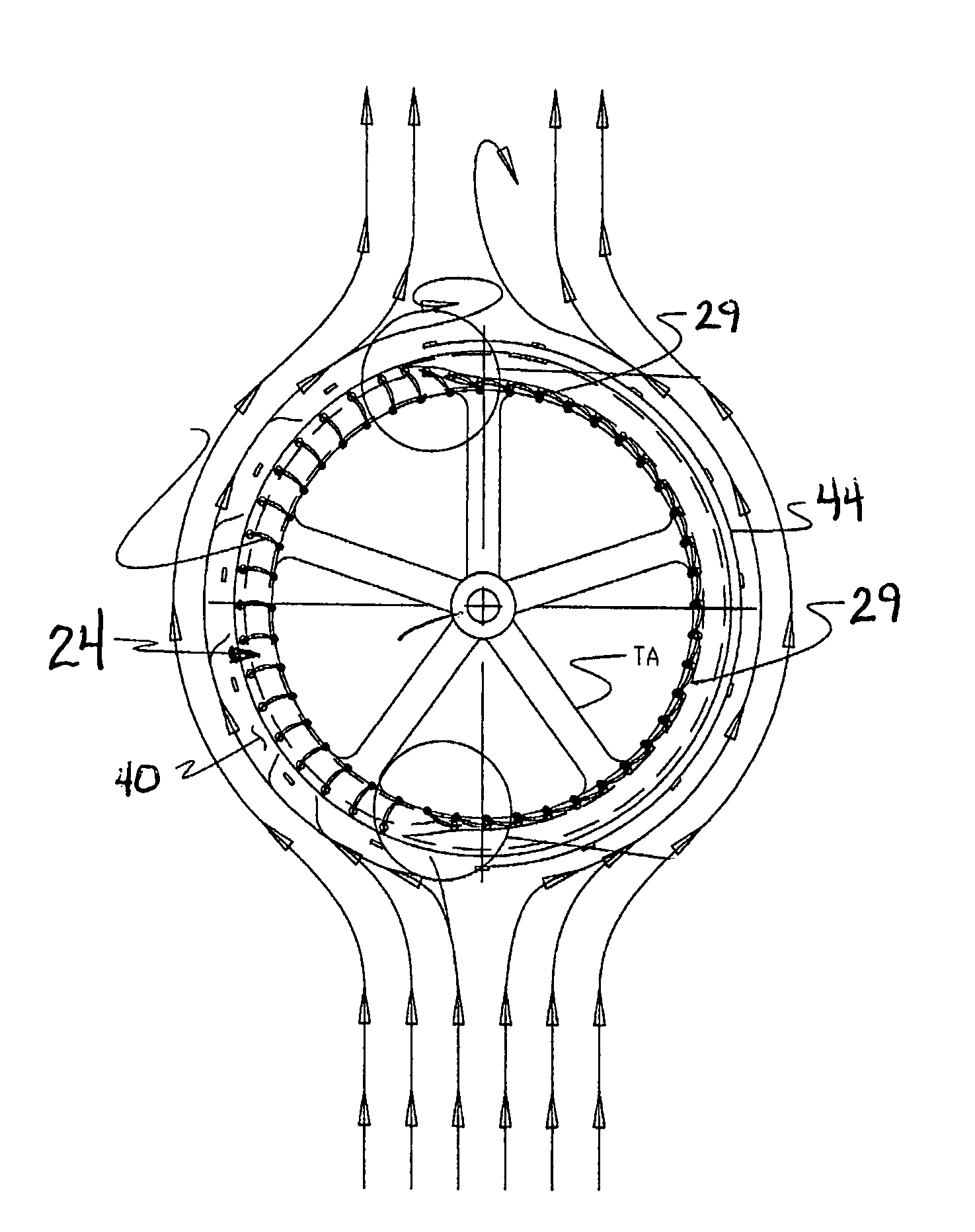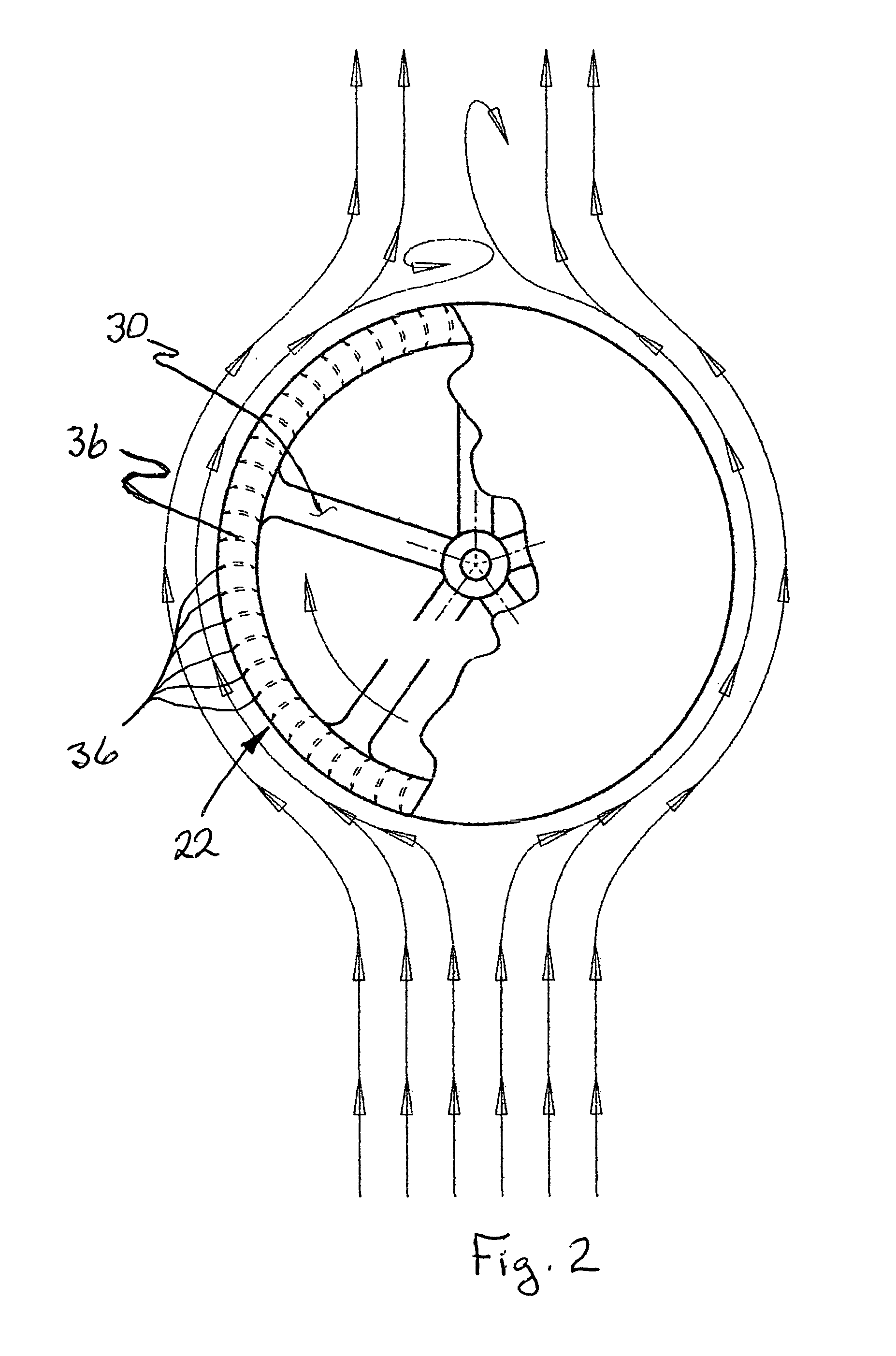Wind turbine assembly
a technology of wind turbines and components, applied in the direction of wind turbines with perpendicular air flow, circumferential flow pumps, wind energy generation, etc., can solve the problems of affecting the movement of birds, so as to reduce the exposure of turbine blades, prevent physical overload of generators or drive shafts, and uniform rotation
- Summary
- Abstract
- Description
- Claims
- Application Information
AI Technical Summary
Benefits of technology
Problems solved by technology
Method used
Image
Examples
first embodiment
[0043]the wind turbine generator of the present invention is depicted in FIG. 1 generally at 20. Turbine generator 20 consists of a turbine assembly 22 having a first “footprint” with respect to ground coverage. Turbine assembly 22 is mounted on a support tower 50 which has a second footprint that is only slightly smaller than the first. This distinguishes turbine generator 20 from prior art propeller blade wind turbines whose footprint is dozens of times larger than the footprint of its tower. Turbine assembly 22 preferably rotates around a vertical axis making it significantly more “bird friendly” in that there is no downward chopping movement which catches avians unaware. Turbine assembly 22, as best seen in FIGS. 2-3A, 3B, 7, 7A and 7B, comprises a cylindrical drum 24 which has a first upper ring 26 on one end and second lower ring 28 at an opposite end of drum 24. A plurality of spokes 30 extend outwardly from central hub 32 to first ring 26. Hub 32 is connected via shaft 34 to...
second embodiment
[0045]The turbine configuration may be of the open variety as shown in FIGS. 2, 5 or, alternatively, as shown in a second embodiment depicted in FIG. 4, the turbine may be of a closed configuration; that is, an inner housing 45′ can be provided extending between rings 26′, 28′ to prevent wind from passing through the drum 24′. It is believed that the housing 45′, while adding some additional weight, will make up for it by focusing the force of the wind on blades 36′, rather than allowing some of the wind to slip off the surface of blades 36′ into the interior of drum 24′.
[0046]FIG. 9 shows multiple turbines in multiple housings 40A″, 40W′ mounted on a single tower 50″. While only two are shown, obviously, additional turbines could be utilized. Tower 50″ will be sized to position turbine assemblies 22 above buildings, trees, etc., that will interfere with air flow causing wind shear and reducing the effectiveness of the wind turbines.
[0047]FIGS. 10a and 10b depict an alternative conf...
PUM
 Login to View More
Login to View More Abstract
Description
Claims
Application Information
 Login to View More
Login to View More - R&D
- Intellectual Property
- Life Sciences
- Materials
- Tech Scout
- Unparalleled Data Quality
- Higher Quality Content
- 60% Fewer Hallucinations
Browse by: Latest US Patents, China's latest patents, Technical Efficacy Thesaurus, Application Domain, Technology Topic, Popular Technical Reports.
© 2025 PatSnap. All rights reserved.Legal|Privacy policy|Modern Slavery Act Transparency Statement|Sitemap|About US| Contact US: help@patsnap.com



